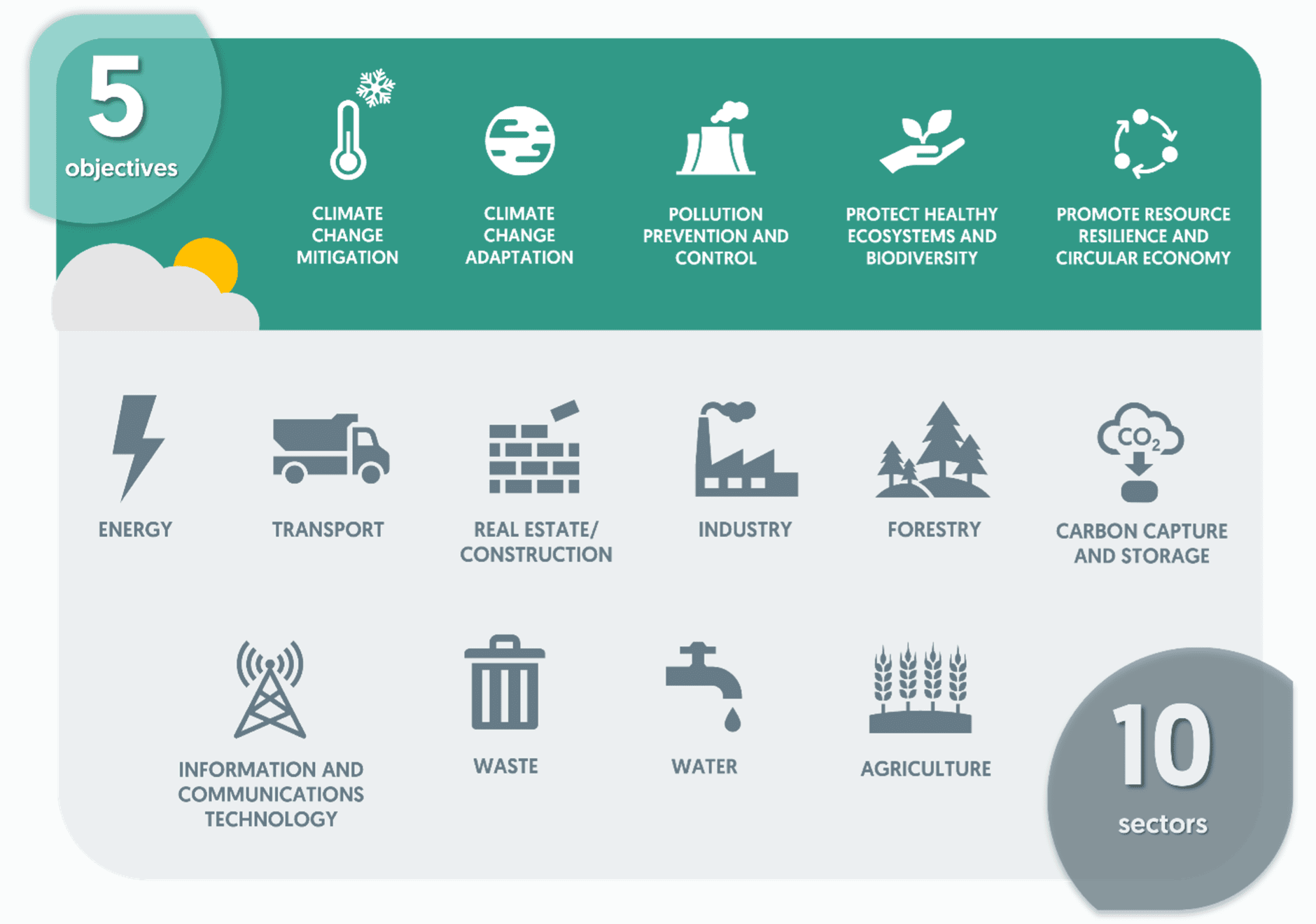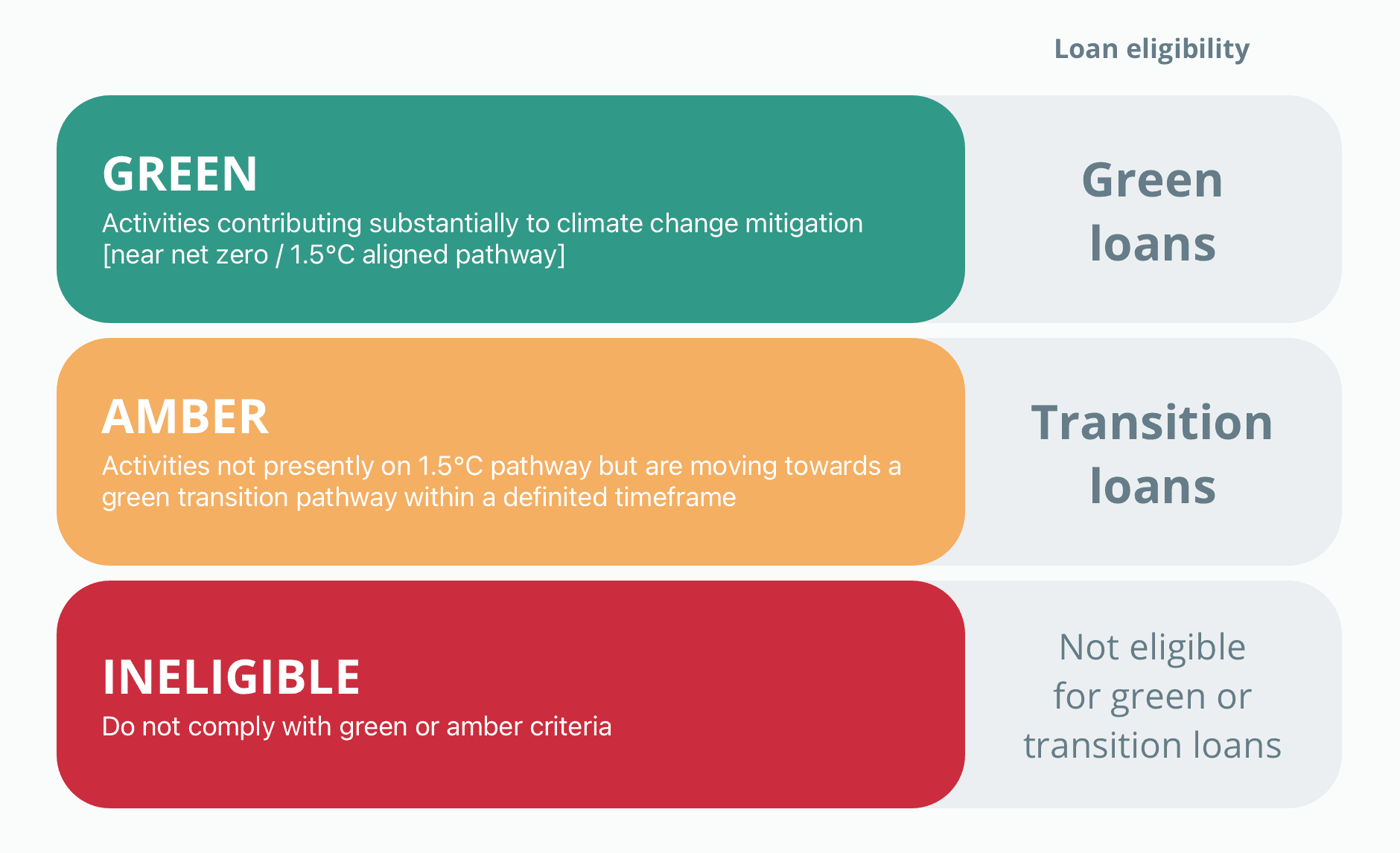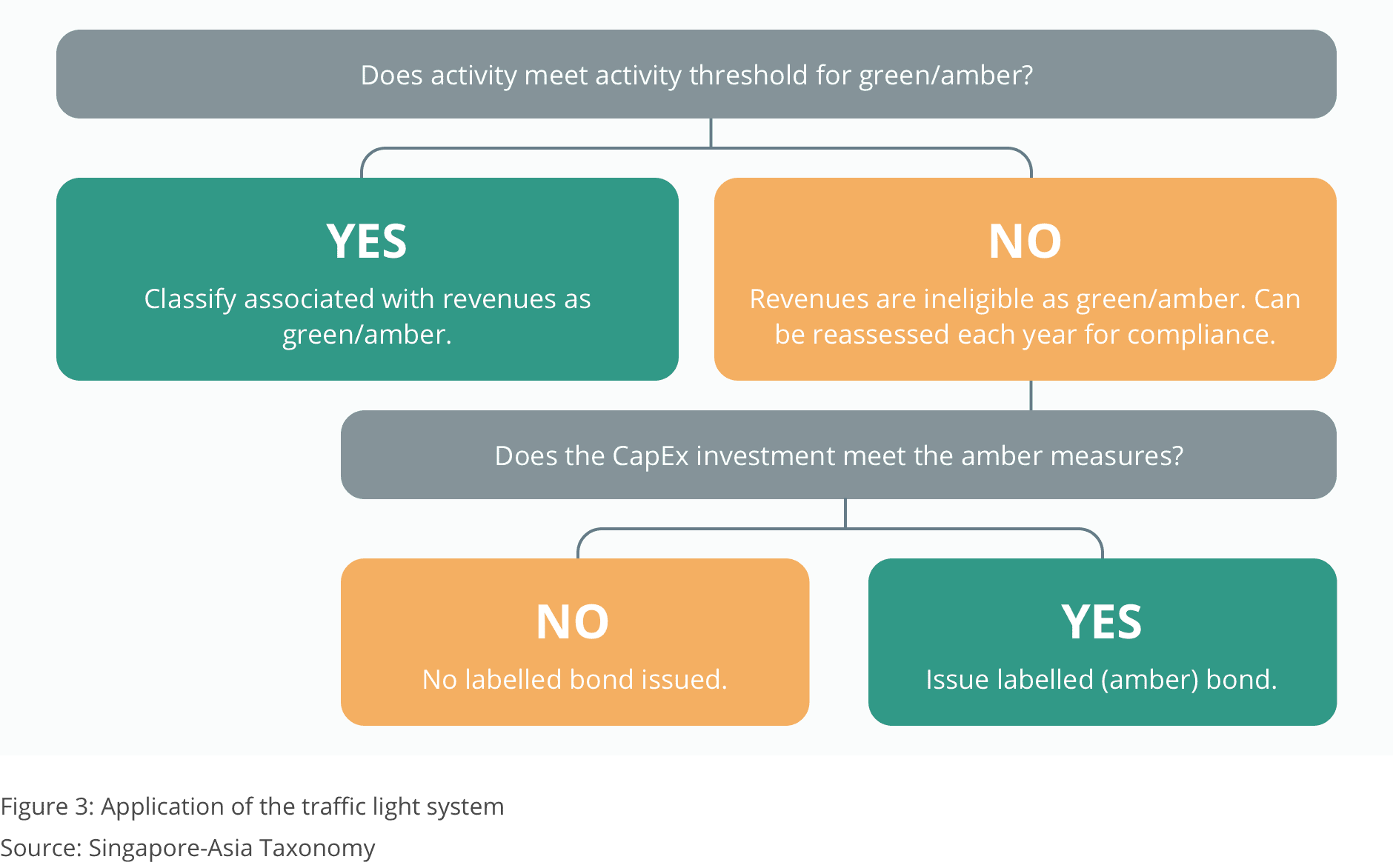The Singapore-Asia Taxonomy: A catalyst for transition finance
The Singapore-Asia Taxonomy: A catalyst for transition finance
What is the Singapore-Asia Taxonomy and what does it mean for you?
As the urgency to accelerate the climate transition grows, governments and financial institutions globally recognise the need for standardised frameworks, such as taxonomies, to provide consistent, credible and robust criteria to direct capital towards clearly defined sustainable activities.
The Monetary Authority of Singapore (MAS) launched the Singapore-Asia Taxonomy (“Taxonomy”) in December 2023. A taxonomy is essentially a classification system, using thresholds and technical criteria to define “green” and “transition” activities. The Taxonomy aims to provide a robust method of classification to ensure companies are aligned with Singapore's and the region’s overall environmental objectives, ultimately in line with the Paris Agreement goal to limit temperature rise to 1.5°C above pre-industrial levels. This includes Singapore’s nationally determined contributions (NDCs) under the Paris Agreement where Singapore set out its commitment to reach net zero emissions by 2050 as well as targets under the Singapore Green Plan 2030.
What is the scope of the Taxonomy?

Figure 1: Five environmental objectives and ten sectors covered by the Singapore-Asia Taxonomy
The Taxonomy aims to cover green and transition activities with five environmental objectives. The first version of the Taxonomy defines the economic activities and technical screening criteria for climate change mitigation, with the other environmental objectives to be added in future versions. The Taxonomy covers sectors making up 90% of the region’s GHG emissions, serving as a guide for users to allocate capital into green and transition activities.
The Taxonomy is intended to be dynamic and fluid to remain relevant amidst a rapidly changing global climate. New technologies, ground-breaking research and the rapid evolution of the sustainable finance market are some of the many factors that will prompt a recalibration of the criteria set out in the Taxonomy.
What does the Taxonomy aim to achieve?
1. Create a consistent classification system
By providing a common framework for the classification of economic activities, the Taxonomy enables stakeholders to gather information related to sustainable financing, funding and investment. The Taxonomy references the latest Singapore, ASEAN, EU and international thinking, allowing for clarity, consistency and harmonised reporting for investments in Singapore and globally.
2. Provide a benchmark for green and transition activities
Prior to the release of the Taxonomy, there lacked a commonly accepted national standard for what activities are considered green or transition, making decision-making subjective. The Taxonomy effectively removes this element of subjectivity, providing consistency to the customers we support as well as the banks and investors we work with to align on what are green and transition activities.
3. Reduce the risk of green and transition washing
With a consistent framework for green and transition activities, the Taxonomy helps to lend credibility to Taxonomy-aligned green and transition financing products. By reducing the ambiguity of what activities align with the low-carbon transition, the Taxonomy aims to help reduce green and transition washing risks, promoting the development of robust sustainable and transition financing and investment products.
What are some of the key features of the Singapore-Asia Taxonomy?
1. Offers guidance referencing published climate science
The Taxonomy aims to merge climate science and actionable guidance for the financial sector. The criteria are based on science with references to data sources provided wherever possible. For example, in the shipping sector, the technical guidance is based on guidance from the European Union (EU) Taxonomy, which ultimately tracks the standards required by the International Maritime Organisation (IMO).
As there could be different data sources contributing to the creation of the Taxonomy, the technical screening tables indicate which sources have been used as the basis for the science. This includes the EU Taxonomy, Science-based Targets Initiative, Transition Pathway Initiative, Climate Bonds Initiative and academic sources.
2. Aims to be globally interoperable
A common question asked is “Will a green loan in Singapore be considered a green loan in the EU?”. The Taxonomy aims to reduce such uncertainty and is designed to be as interoperable as possible with other international taxonomies, particularly the EU Taxonomy and ASEAN Taxonomy. Given OCBC’s global portfolio, achieving global interoperability is important so that we can align our sustainable financing activities across our key markets in ASEAN, Greater China and beyond.
However, achieving global interoperability is a daunting task due to the unique characteristics of each country. For example, there may be fewer renewable energy options that can be tapped on in Singapore compared to Malaysia due to geographical constraints. Regional transition plans and pathways will also vary widely due to socio-economic differences. While having a fixed set of environmental objectives for all regions to strive towards sounds ideal, in practice, implementation will be difficult. To support global interoperability, MAS has announced that it will map the Taxonomy to the Common Ground Taxonomy (CGT), which currently covers the EU Taxonomy and People Bank of China’s Green Bond Endorsed Project Catalogue, to allow financial institutions and market participants to refer to a common set of definitions and facilitate sustainable development across markets.
3. Adopts a “traffic light” system
A distinctive feature of the Taxonomy is the introduction of a traffic light classification system to distinguish between green (near net zero), amber (transition) and red (ineligible) activities.

Figure 2: Traffic light system in the Singapore-Asia Taxonomy
Green activities contribute substantially to climate change mitigation by operating at near zero emissions or are on a 1.5°C-aligned pathway. The Taxonomy’s green eligibility criteria help to define what activities we finance may be eligible for green loans or bonds.
Amber activities are not presently on the 1.5°C pathway but are either moving towards a green transition pathway within a defined time frame or are facilitating emissions reductions in the short term with a prescribed sunset date. In most cases, the sunset date has been set at 2030, with some exceptions for hard-to-abate industrial sectors, with the aim of facilitating activities to move towards the green criteria. Some activities do not have amber criteria as the technology to operate in line with a 1.5°C pathway is already sufficiently developed.
In some sectors, the Taxonomy also introduces amber measures criteria, which are applicable to capital expenditures (CapEx). When the CapEx investment does not meet the amber criteria but meets the amber measures, it can be classified as a labelled transition loan or bond. This provides Taxonomy users with greater flexibility in the application of the Taxonomy to label activities that do not meet the amber activities criteria but still support the transition towards green as “transition”.
Ineligible activities are those that do not comply with the green or amber criteria.

4. Provides guidance on the managed phase-out of coal-fired power plants
The early and managed phase-out of coal-fired power plants is critical for the climate transition, particularly in Asia, where coal accounts for almost 60% of power generation. Coal transition mechanisms (CTM), such as the Just Energy Transition Partnerships launched in South Africa, Indonesia and Vietnam, aim to allow investors to wind down coal assets and their obligations while placing transition objectives as a key goal. However, CTMs are still in their early stages, with a lack of with a 1.5°C-oriented, science-based classification system to define investments under coal transition schemes.
The Taxonomy provides guidance on early coal phase-out deals under existing or planned CTMs, providing a framework to ensure their credibility, aligned with a 1.5°C-oriented transition. Under the framework, a coal-fired power plant can be considered potentially suitable for a managed coal phase-out process if it meets all the facility-level criteria and entity-level criteria set out in the Taxonomy, such as requiring positive absolute emissions savings over the expected total lifetime of the coal plant and requiring the coal plant to be retired at or before 25 years of operations. The framework aims to help increase the usability of coal transition debt vehicles, with robust criteria to ensure investments are aligned with a 1.5°C-oriented transition pathway to avoid greenwashing claims.
What are the implications for companies?
The Taxonomy is intended to be voluntary for use in the first years, with more work to be provided on the use of Taxonomy in disclosures and debt financing in the future. At present, the Taxonomy presents an opportunity for companies to demonstrate their commitment to the climate transition in two ways:
1. Align investments with green or transition criteria
The Taxonomy is an opportunity for companies to align their investments and business activities with credible and science-based criteria for green and transition activities. By doing so, companies add credibility to their climate strategy and transition plan and show their investors and stakeholders that they are committed to the climate transition, while remaining future-ready and resilient in the net zero economy, aligned with Singapore’s goal to reach net zero by 2050.
2. Leverage on green and transition financing solutions to support transition goals
The Taxonomy is an opportunity for companies to align their financing with their green and transition investments through sustainable financing solutions, including green and transition loans and bonds. By doing so, companies can gain access to a broader pool of capital by tapping on financiers and investors focused on sustainable investments. Aligning financing with green and transition criteria in the Taxonomy also adds credibility and ensures the robustness of the sustainable financing transaction is aligned with science-based criteria and best practices.
How can OCBC help you capture post-Taxonomy opportunities?
1. Help you assess your alignment with the Taxonomy criteria
Navigating the Taxonomy and its requirements can be a daunting task. OCBC can help you navigate the Taxonomy and the technical screening criteria relevant to your company by helping you better understand how you can align your financing and investments with its green or transition criteria as you work towards transitioning your business to be future-ready in a low-carbon economy.
2. Offer credible transition financing solutions
OCBC can work with you to structure credible and robust green and transition financing solutions, aligned with the Taxonomy criteria, to help you achieve your environmental objectives. We can support you in the development of dedicated Green and Transition Financing Frameworks so that you can enter into multiple green and transition financing solutions that are aligned with your transition strategy and achieve your climate aspirations.
3. Support you on your transition journey
OCBC stands ready as your trusted partner to empower you in your journey to decarbonise your business and seize opportunities for transformational growth. Guided by the Taxonomy and supported by our networks and partnerships with industry players and sustainability solution providers, we are well-placed to guide you in your transition journey, helping you understand where you are in your sustainability journey and what steps you could take to align with internationally recognised decarbonisation pathways and sustainability requirements.
Mike Ng, OCBC’s Chief Sustainability Officer, said: “We are thrilled to embrace the Singapore-Asia Taxonomy as a game-changing milestone for sustainable and transition finance in our region. This groundbreaking development will empower us to strategically allocate capital towards taxonomy-eligible activities, furthering our commitment to the net zero transition. As more banks in Singapore align their definitions and acceptance of green and transition projects, the credibility of green and transition financing will be enhanced. Moreover, the Taxonomy serves as a valuable tool to engage our clients in their transition journey, enabling us to assess their progress and offer robust transition financing solutions to help them achieve their climate aspirations.”
The publication of the Taxonomy is not just another piece of legislation to follow. It is a key step in Singapore’s sustainability journey. With the world’s first multi-sector transition Taxonomy, OCBC believes it will set the stage for more rapid progress in Singapore’s journey to be a leading centre for sustainable and transition finance in Asia and globally.
In our ESG podcast, Ong Shu Yi, our ESG Analyst, and Alyssa Ng, the Director of our Global Wholesale Banking Sustainability Office, discuss the Taxonomy and its implications for OCBC and our clients.
Listen to the full podcast:
1Crossing the 1.5°C threshold is said to lead to severe climate impacts, including more frequent and severe droughts, heatwaves and rainfall. To hold the planet’s long-term average temperature to below the 1.5°C threshold, the world will have to reach net zero emissions by 2050, requiring significant decarbonisation across all sectors.
Discover other articles about:
